Aviat Husky A-1C
A venerable bush plane turns visionary
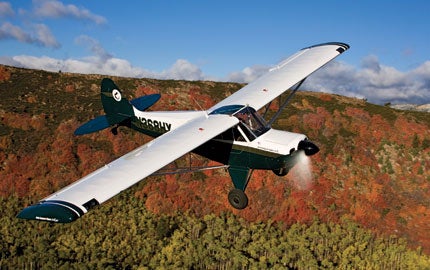 The lights of Lakeland, Fla., sparkle a thousand feet below, a pointillist painting on a black canvas. Yet despite the darkness, I can clearly distinguish open fields, forested tracts, clumps of trees, a couple of large ungulates---either horses or cows---even a narrow, sandy beach on a lake that should be invisible. All I have to do is glance at the small monitor sitting on the glare shield of the Aviat Husky A-IC.
The lights of Lakeland, Fla., sparkle a thousand feet below, a pointillist painting on a black canvas. Yet despite the darkness, I can clearly distinguish open fields, forested tracts, clumps of trees, a couple of large ungulates---either horses or cows---even a narrow, sandy beach on a lake that should be invisible. All I have to do is glance at the small monitor sitting on the glare shield of the Aviat Husky A-IC.
In the front seat, Aviat dealer Jeff Welch of Freedom Transportation (www.freedomhusky.com) in Alpena, Mich., is beaming like a proud uncle showing off a precocious toddler as I marvel at the image on
the screen.
"In five years, this system will be in every GA airplane," he says, the chuckle in his voice suggesting that after 17,000 hours of PIC time in Learjets, King Airs and "everything underneath," he thought he'd seen it all. "It turns night into day in front of you!"
The system is the EVS-100 from Forward.Vision (www.forward-vision.net) in Russell, Penn. The company's enhanced vision system (EVS) uses a long-wave infrared (LWIR) sensor, mounted atop the cabin in a 1.2-pound housing, to see through darkness, smoke, haze and fog. [For more, see the "EVS Technology" sidebar.] It was only a matter of time before EVS technology, currently found in Gulfstreams, Boeing BBJs and other high-end business jets, filtered down to the piston OEM market. But...a bush plane as the launch platform?
Explaining why he wanted to put the EVS-100 in the Husky, Stu Horn, president of Aviat Aircraft (www.aviataircraft.com) in Afton, Wyo., commented earlier in the evening, "We fly in remote rural areas where there's very little ambient light source. If you take off at night, you rotate and look outside and there's no horizon, no clouds, no mountains---no nothing. The cues that pilots rely on as a reference sometimes are obscured or not available to us. So this is a safety factor. When we rotate into the dark now, we have a horizon."
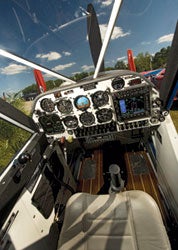 The Husky itself is hardly old technology, so it's a fitting mount as the first piston aircraft to offer enhanced vision as an OEM option. The Husky was developed in the mid-1980s as a clean-sheet version of the Piper Cub by Frank Christensen, designer of the Christen Eagle II aerobatic kit biplane, after he was rebuffed from buying rights to the Cub when Piper ceased its production. Christensen's team interviewed Cub owners on what they liked and didn't like about their airplanes, then created the Husky using computer-aided design (CAD). Certified in 1987, the Husky A-1 went from napkin to production in 18 months. It has gone through several iterations since then, and tonight we're flying the fourth variant, the newly certified Husky A-1C.
The Husky itself is hardly old technology, so it's a fitting mount as the first piston aircraft to offer enhanced vision as an OEM option. The Husky was developed in the mid-1980s as a clean-sheet version of the Piper Cub by Frank Christensen, designer of the Christen Eagle II aerobatic kit biplane, after he was rebuffed from buying rights to the Cub when Piper ceased its production. Christensen's team interviewed Cub owners on what they liked and didn't like about their airplanes, then created the Husky using computer-aided design (CAD). Certified in 1987, the Husky A-1 went from napkin to production in 18 months. It has gone through several iterations since then, and tonight we're flying the fourth variant, the newly certified Husky A-1C.
Welch and I are at 500 feet along the shore of Lake Parker. The Husky hugs the bank, the wing at a 60-degree angle, nose pasted on the horizon, following commands as eagerly as an obedient mastiff. Across the water, the power plant that serves as the reporting point for aircraft inbound to Sun 'n Fun is only a dim outline---but it's aglow on the monitor.
Horn's interest in EVS technology was sparked by an inquiry from "a guy with a military research background" about outfitting the Husky with surveillance capability. As we talked about the new Husky at Landmark Aviation (www.landmark-aviation.com) before the flight, Horn's discretion regarding this chapter of the story suggests he could tell you more, but he'd have to kill you if he did. But Horn started asking questions about EVS, and that led him to cross paths with Forward.Vision's president, Pat Farrell, who had developed an intense interest of his own in the technology.
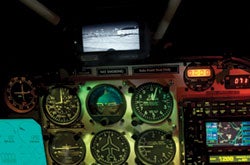 |
| The A-1C's cockpit has a Garmin GNS 530 navcom/GPS. The view on the EVS-100 monitor covers 40 degrees horizontally and 30 degrees vertically, matching the view directly in front of the pilot. |
"My buddy was killed in an Aerostar in Bradford, Penn., in 2002," Farrell had confided during our meeting at Landmark. "He fell below the glideslope and hit some trees. It really angered me. He was a well-trained, careful pilot. And I thought, if he had EVS technology, he might have seen the trees---he might have lived through it. And I got to thinking: Why didn't we have infrared cameras in our airplanes? It was a very naïve thought."
It was naïve because the Department of Defense controlled access to the sensors at the heart of EVS, and military demand and concerns about the sensors falling into the wrong hands kept them out of the private sector. But Farrell persevered.
"Saving pilots' lives---that's what our mission has been," said Farrell. "If you think of the things that kill pilots, it's CFIT [controlled flight into terrain], inadvertent entry into IMC after dark, nighttime spatial disorientation or even daytime spatial disorientation because of haze. There are runway incursions, deer-runway accidents and engine-outs after dark."
By the time Horn met him, Farrell was working with Max-Viz (www.max-viz.com), a Portland, Ore.--based developer of EVS, and Ron Lueck, president and CEO of CompAir (www.compair.com) in Merritt Island, Fla. Development of the EVS-100 was underway. One of the primary design criteria: "It had to be affordable," Farrell said. Considering that the EVS on a Gulfstream can be in the half-million-dollar range, and the EVS-100 installed on the Husky costs $22,000, one would have to say, "Mission accomplished." The unit is sold for aftermarket installation without a monitor or wiring harness for $14,995. The output can be displayed on several MFDs and portable monitors.
The monitor's field of vision covers 40 degrees horizontally and 30 degrees vertically, corresponding with the view directly in front of the pilot. (If the runway is in the middle of the windshield, it will also be in the middle of the monitor.) The unit requires little to no pilot manipulation. Other than a 2x digital zoom, the only controls are brightness and contrast knobs. The mean time between failure (MTBF) is more than 9,000 hours, but as it's designed solely for advisory use, an in-flight failure shouldn't constitute an emergency.
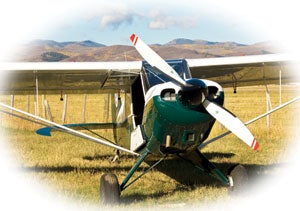 Truth be told, Lakeland isn't the best venue for letting either the Husky or the EVS-100 strut its stuff. The rugged Husky is designed for backcountry ops, landing on riverbeds, meadows, glaciers and sandbars, and going in and out of short, unimproved strips. And the EVS capabilities are best demonstrated on a moonless, overcast, pitch-black night, when it clearly displays the horizon, terrain, runways and anything else in front of the plane. But the 200 hp Husky still showed off its short-field capabilities when we took off, leaping from the runway in little more than 200 feet. (Because I wanted to check out the surroundings in the monitor, we didn't point the nose skyward in a Vx attitude, which would have given us better than a 1,700 fpm climb at our weight and OAT, according to the book.)
Truth be told, Lakeland isn't the best venue for letting either the Husky or the EVS-100 strut its stuff. The rugged Husky is designed for backcountry ops, landing on riverbeds, meadows, glaciers and sandbars, and going in and out of short, unimproved strips. And the EVS capabilities are best demonstrated on a moonless, overcast, pitch-black night, when it clearly displays the horizon, terrain, runways and anything else in front of the plane. But the 200 hp Husky still showed off its short-field capabilities when we took off, leaping from the runway in little more than 200 feet. (Because I wanted to check out the surroundings in the monitor, we didn't point the nose skyward in a Vx attitude, which would have given us better than a 1,700 fpm climb at our weight and OAT, according to the book.)
The previous Husky model, the A-1B, introduced in 2005, elevated the Husky's performance through improved control-surface response and effectiveness. The ailerons were redesigned, yielding a lighter touch on the stick and increasing the roll rate by half. The flap controls were redesigned and the flap span was increased, producing steeper descents and climbouts. But now that the B model's aerodynamics have given the Husky more finesse, the A-1C has come to reclaim its brawniness.
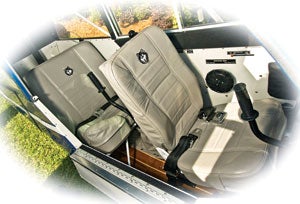 |
| The high-wing Husky features tandem seating and dual controls. |
"The primary objective was a useful-load increase," says Horn. "The list of options and equipment we can install in the airplane has grown. And everything weighs a few pounds---a few pounds here, a few pounds there---so I was wondering: What's the maximum structural capability and the maximum realistic load potential of this airplane?"
The wing, fuselage, tail and landing-gear structures were tested to determine load-bearing limits. The fuselage and wing were found capable of handling several hundred additional pounds while maintaining a hefty safety margin. The landing gear, however, couldn't handle increased loads quite as well, particularly when the lateral forces associated with operations on skis were factored in. The tail assembly also needed strengthening to handle the loads the wing and fuselage could bear. Ultimately, Horn decided to raise the gross weight by 200 pounds, though he knows it can handle more.
"I decided on 2,200 pounds because we know how we all are," Horn says. "If I tell you to stop at 2,200, I know you're going to have a margin above that. And I wanted the handling at 2,200 pounds to be the equivalent of handling at 2,000 pounds, so an A-1C pilot wouldn't discern that he's carrying 200 more pounds."
Despite the focus on weight, the A-1C adds some aerodynamic improvements of its own to the Husky: extended semifowler flaps (for shorter takeoffs and landings) and advanced-performance ailerons. And the spades have been eliminated from under the wings, providing more stability and probably sparing a few people from lacerations.
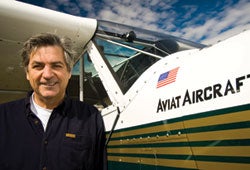 |
| Stu Horn is proud that the Husky is the first piston aircraft with EVS as an OEM option. |
The A-1C is available in both 180 hp and 200 hp configurations, and four different propellers are approved for the aircraft, giving a wide choice in balancing preference for takeoff and landing performance with cruise speed.
Welch has taken the controls for a low pass over X49, South Lakeland Airpark, two miles south of Lakeland Linder Airport (LAL). It's unlighted and not visible to the naked eye, but looking at the monitor, we could have easily put it down on the turf if we had to.
We may not be in the bush, but as we head back to LAL over namesake bodies of water, I realize that it could be Husky country, after all. Aviat is certifying the A-1C for amphibious floats. Previously, the Husky's carrying capacity on floats limited its utility. But thanks to the gross-weight increase, an amphib A-1C will have an impressive useful load of more than 700 pounds.
And who knows what other changes lie ahead for the Husky? Even the EVS can't see that. When Horn bought Aviat in late 1995, he was a real-estate developer from the New York area---with no experience in aviation---who was looking to do something different with his life. Now he's an avid pilot, eager to incorporate his enthusiasm into every airplane the company builds.
"I know what I don't know now," Horn says about the difference in running the company today compared to when he first bought it. "But because I use the airplane, I'm always saying, ’I wish I could do this' or ’I wish I had that.' So between that and input from our customers, there's no shortage on the wish list of things we want to do."
| EVS Technology |
| At the heart of today's enhanced vision systems (EVS) are infrared sensors that detect long-wave infrared (LWIR) emissions invisible to the human eye. All matter above absolute zero emits heat, which infrared sensors can use to create a thermal image. The infrared sensors gather the information on the differences in thermal energy, and the data is processed to create an image display on a screen in wavelengths that can be seen and interpreted by the human eye. The eight- to 12-micron band is the range for detecting LWIR emissions through smog, fog, smoke and darkness. Therefore, this bandwidth provides maximum "atmospheric transmission" (the term denotes LWIR emissions' ability to penetrate the atmosphere).
|
SPECS: Aviat Husky A-1C-200
Check out the newest Husky and other fantastic single-engine airplanes in our latest Piston Singles Buyer's Guide.

Subscribe to Our Newsletter
Get the latest Plane & Pilot Magazine stories delivered directly to your inbox

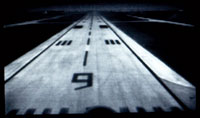
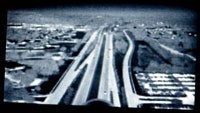 Forward.Vision's thermal camera imaging system clearly displays the runway threshold (left), horizon, terrain, such as highways (right), and anything else in front of the airplane in pitch-black night.
Forward.Vision's thermal camera imaging system clearly displays the runway threshold (left), horizon, terrain, such as highways (right), and anything else in front of the airplane in pitch-black night.



